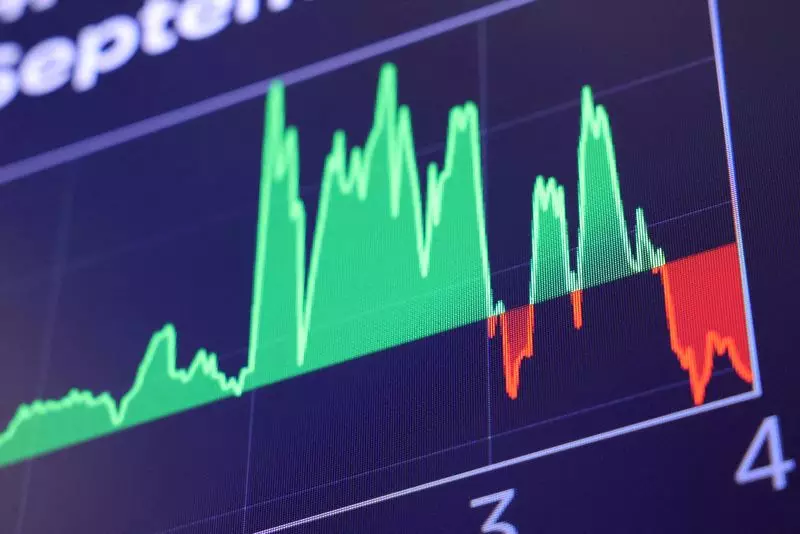As the trading day commenced on Thursday, the atmosphere surrounding U.S. stock indexes indicated a tempered opening—reflecting a brief pause from the energetic performance observed on Wall Street just a day prior. Investors appeared to be reassessing their positions with a keen eye on a whirlwind of corporate earnings reports, economic indicators, and fresh remarks from President Donald Trump, all of which were anticipated to shape market dynamics throughout the day. This hesitation was exclusively underscored by premarket trading, where Dow E-minis experienced a modest uptick of 45 points (0.10%), while S&P 500 E-minis and Nasdaq 100 E-minis reported slight declines of 0.09% and 0.44%, respectively.
The context of this measured response draws attention to several market catalysts that had propelled gains in recent sessions. Notably, Wednesday marked the S&P 500 and blue-chip Dow’s sixth climb in seven sessions, culminating in a record intraday high not seen in over a month. Market optimism had been buoyed by President Trump’s ambitious announcement of a $500 billion investment aimed at bolstering artificial intelligence infrastructure, alongside Netflix’s impressive quarterly results, which added fuel to the recovery narrative following signs of softening inflation amidst a backdrop of robust economic activity.
Despite these bright spots, certain tech-heavy stocks that had thrived in the previous session appeared to cool off. Leading players in the AI sector, such as Nvidia and Microsoft, dipped by 1.6% and 0.6%, respectively. Chipmakers—critical components of the tech ecosystem—also experienced similar downward pressure, as icons like Advanced Micro Devices and Broadcom each fell by around 1%. This realignment suggests investors are deliberating the sustainability of recent advances amidst a slew of complex economic messages.
Scott Ladner, chief investment officer at Horizon Investments, articulated a prevalent sentiment among investors: “The market probably needs a couple of days to digest the flurry of news.” Ladner pointed out the need for clarity regarding Trump’s executive actions that have significant economic implications, particularly concerning his administration’s trade policies and potential tariffs aimed at imports from key global partners such as Canada, Mexico, China, and the European Union.
Notably, the uncertainty surrounding proposed tariffs stands to create potential economic friction and may catalyze a broader global trade conflict. Analysts speculate that the implications of upcoming tariffs, though hinted at for announcement on February 1, might reveal their true nature by April 1. Such developments are pivotal as they could indeed interfere with Federal Reserve strategies, stalling monetary policy easing efforts at a time when traders are banking on a steady interest rate landscape for the next few years.
In contrast to market hesitations, macroeconomic reports remained mixed. The Labor Department noted weekly jobless claims at 223,000, slightly exceeding expectations, which may contribute to the broader narrative regarding labor market health and economic resilience.
While the broader market remained cautious, individual stocks painted a more dynamic picture. General Electric Aerospace reported an impressive 7% surge following an optimistic profit forecast, driven largely by robust aftermarket demand. In the health insurance sector, companies such as Elevance, UnitedHealth Group, and others saw gains as they outperformed earnings expectations, suggesting a resilience in healthcare spending amid fluctuating economic conditions.
Conversely, American Airlines faced a challenging forecast, with its stock plummeting by 5.2% after it revised its profit expectations downward. Similarly, Electronic Arts experienced a staggering 16.5% decline amid disappointing annual bookings forecasts, particularly linked to underperformance in its celebrated soccer franchise. The semiconductor sector showed vulnerability as well, with Micron declining by 3.4%, following SK Hynix’s cautioning on declining demand in the commodity memory chip market.
Today’s market movements reflect a complex interplay between investor sentiment, corporate performance, and looming economic policies. As traders navigate through uncertainty, the focus will be on gathering more information regarding fiscal policies and how they might ripple through different sectors. The convergence of economic reports, earnings releases, and Trump’s policy declarations will remain critical as investors position themselves amidst this period of introspection and strategic re-evaluation.

